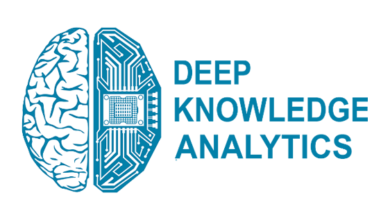Navigating the Shift: Mark Huntley on Google’s SERP Evolution and Organic Search Impact

In a digital era where visibility equates to viability, the latest evolution of Google’s Search Engine Results Page (SERP) presents a paradigm shift for advertisers and content creators alike. Mark Huntley, a seasoned SEO analyst from San Diego, California, delves into the intricacies of these changes, offering vital insights into how they reshape the approach to organic search.
The traditional battleground of organic search was once straightforward: rank among the top ten search results. However, Google’s recent introduction of various features such as Knowledge Panels, People Also Ask boxes, and Top Stories has dramatically expanded the “real estate” above the fold – the visible area of the SERP without scrolling. Huntley notes that this expansion has profound implications: where once the top organic result was king, it now finds itself buried beneath a heap of Google-curated content.
Google SERP Changes 2024: Explaining the New Reality of Organic Search Traffic
For high-value keywords, users are presented with 10 to 15 different Google feature options before even glimpsing the first organic result. This seismic shift has reshaped the SERP landscape, necessitating a reevaluation of SEO strategies. Huntley emphasizes that the impact on organic search clicks is undeniable – with the proliferation of Google’s features, the likelihood of users clicking on organic results has diminished, particularly for certain high-value keywords.
Driving Traffic Using Google SERP Tool Features
Exploring the nature of the new SERP features, Huntley draws attention to the AI Generated Results, which use AI to summarize and compile information from top articles, delivering a synthesized answer to the user’s query at the top of the SERP. Other notable features include Knowledge Panels, People Also Ask sections, Top Stories, Local Packs and Maps, and Image and Video Carousels. These features have significantly altered user interaction with search results, influencing click-through rates and modulating web traffic.
The introduction of these features marks a stark contrast from the old SERP layout, which predominantly featured a simple list of blue links with occasional ads. The new layout, more dynamic and interactive, comes at the cost of traditional organic search visibility. This transformation is not just a change in aesthetics but a fundamental shift in how information is accessed and prioritized.
Statistics and trends demonstrate the decline in organic clicks, especially for the first organic position. This trend is exacerbated when results are not included within a feature, leading to a negative impact on click-through rates across all positions. Conversely, being featured within a SERP element can have a positive effect, but this is limited to positions beyond the first.
Huntley cites the keyword “best running shoes” as an example. A typical SERP for this query might include shopping ads, a knowledge panel on running shoes, a “People Also Ask” section, and perhaps a video carousel. These elements consume significant space, relegating the top organic result to a lower position on the page, and leading to a notable drop in click-through rates.
In light of these challenges, Huntley proposes several strategies for adapting to the new SERP landscape. These include focusing on search intent, using structured data, and optimizing for featured snippets. He also recommends targeting People Also Ask (PAA) boxes, leveraging local SEO, and enhancing visual content. Furthermore, Huntley emphasizes the importance of alternative platforms and channels in driving traffic, such as social media integration, content diversification, community engagement, and email marketing.
In conclusion, Mark Huntley’s comprehensive analysis of Google’s SERP evolution underscores the urgent need for businesses and content creators to adapt their strategies in response to these significant changes. By understanding and leveraging the new SERP features, and diversifying marketing approaches, advertisers can navigate this shift and continue to thrive in the ever-evolving world of digital marketing and search engine optimization.





